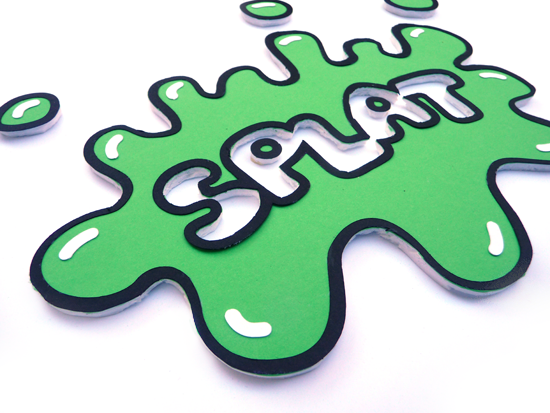REDESIGNING THE LOGOS AND MAKING POP ART ALBUM COVERS (Week 1)
Sophie and I then went away and recoloured the logo’s. We decided to try and slightly adapt it as well; taking out border lines, removing the star etc. We didn’t want to actually design a new logo, as we felt it wasn’t really our place to create a new logo for the night. Lollipop has been running for 15 years or so, and we wanted to respect that by keeping the logo, and only slightly editing it.
We decided, with input from the group, on a colour palette that would be used at the very least for the logos. These colours consisted of classic bright pop art/neon colours that fit our theme.

I then proceeded to recolour the logo using this colour palette. There were a few differences in the group as to what colours were best, as pop art as a theme has a huge variety of colour. However, we decided to refine the various colours to those that were most contrasting and appropriate (for example leaving out orange, as it was very similar to yellow, and using red as it is a common colour of lipstick, a major theme in pop art).
I also had a test in Photoshop, and redesigned the ‘Abbey Road’ album cover. I did this not only to see what it would look like ‘pop art-ed’, but also to practice with Photoshop itself. I haven’t used the software an awful amount, and I want to get better at using it. I enjoyed creating the covers, and learning more of the software; for example, I couldn’t initially change the hue/saturation to make it look pop arty, but learnt how to. I really enjoyed creating the covers because I learned new techniques (even if the covers won’t be used).
I’m looking forward to tomorrow (Monday 8th), and to recolouring the logos.



















